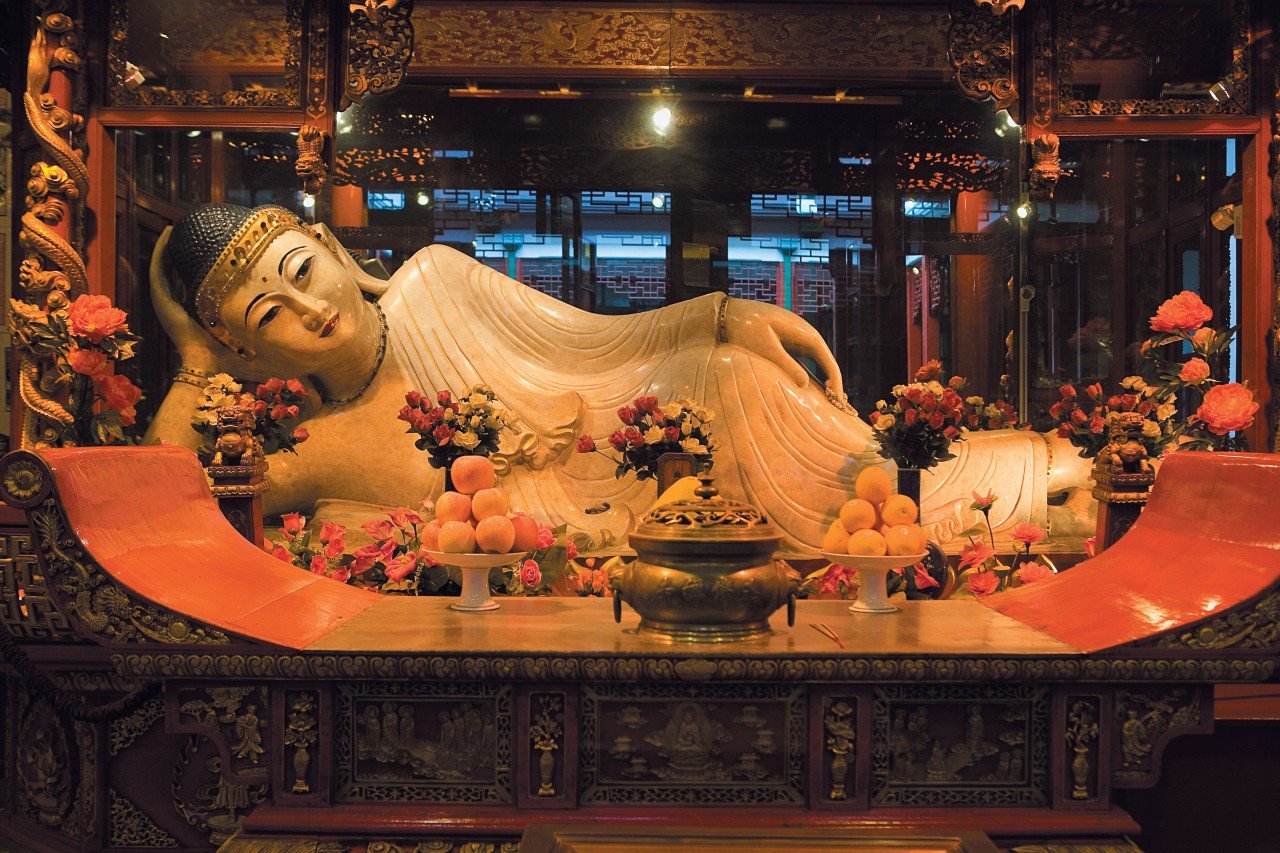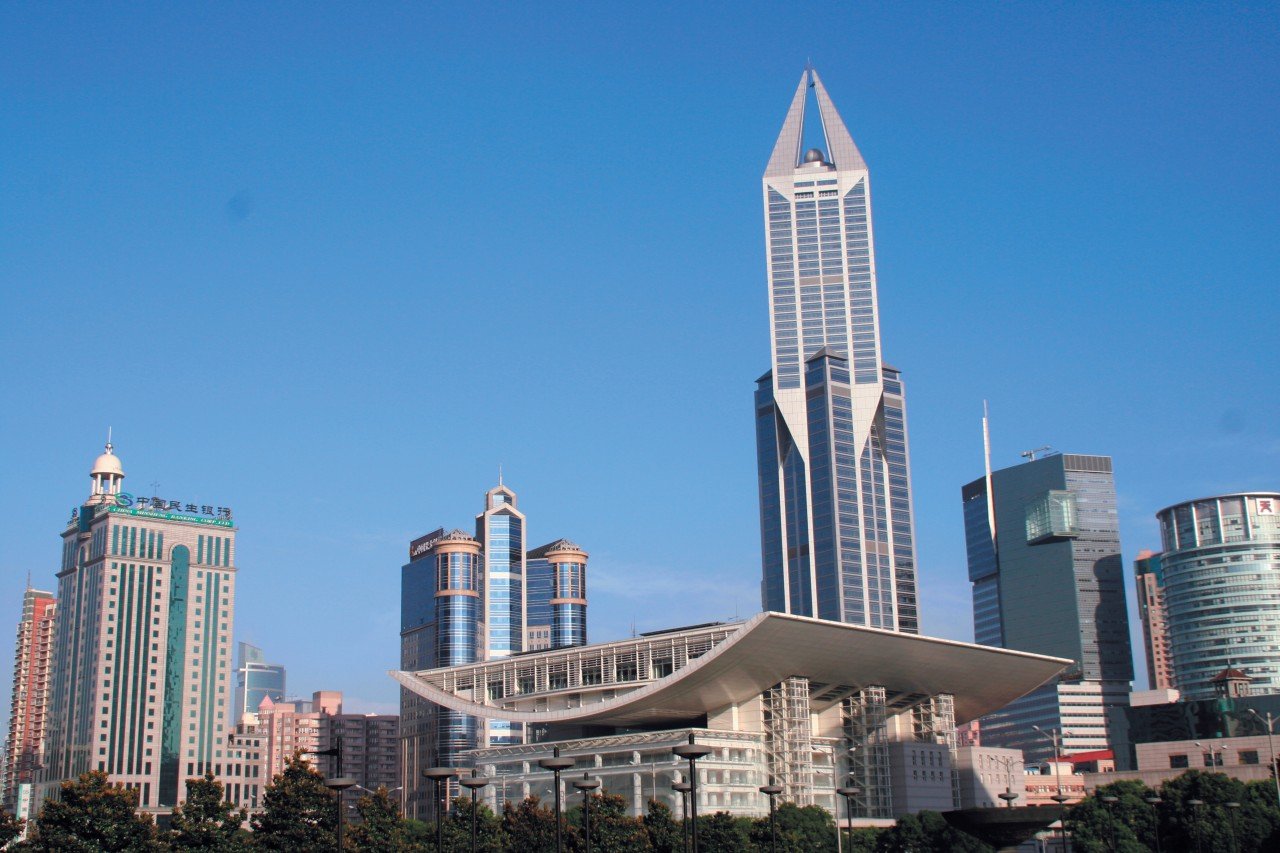Discover Shanghai is an enchantment that should delight all tourists, especially those, going to China for the first time. Here, you will be surprised, particularly by the existence of a permanent contrast between past and future.
Day 1: Between past and future on the Bund
Day 2: The old city and the concessions: The very present past of Shanghai
 ©Author's Image
©Author's Image
If the contrast between past and future is found throughout the city, the best place to judge the wide architectural gap in Shanghai is the Bund. An unmissable promenade, surrounded by elegant colonial-style buildings, the Bund is facing the modernism of the business district, Pudong, across the river. According to a local proverb: "All the roads in Shanghai lead to the Bund. " Every day, thousands of foreign and local tourists pace up and down the promenade and enjoy one of Shanghai's most beautiful views. Go up the Bund from south to north, starting at the crossing of Guangdong Lu and Zhongshan Dong Yi Lu. From there, it's possible to board a boat for an excursion on Huang Pu. From your boat, you will have a more global view of the river front. On the Bund, the old buildings deserve as much attention as the futuristic towers of Pudong. Some were built at the turn of the 20th century, often with Italian marble finishes. You can enter some of these princely houses, which have been or are being renovated. Embassies, chic restaurants and clubs that have made it their home. Come back in the evening, Pudong lights up over one kilometre from the shore. The night panorama is worth looking at around a drink or dinner. The Bund is also very picturesque at sunrise, when the Shanghainese come and make their tai-chi. The visit continues through Nanjing Street (Nanjing Dong Lu) which points away from the Bund at the level of the mythical Peace Hotel. Welcome to the shopping paradise: hundreds of shops of all kinds align with this one-kilometre-long pedestrian stretch, which attracts some 800,000 Chinese and foreign visitors every day. You can find the city's oldest stores at the Nanjing Street. Veterans include Laofengxiang jewellery, founded in 1852 and selling gold, diamonds, jade jewellery and Leiyunshang and Cai Tong pharmacy, active since 1861. Nanjing Dong Lu ends at People's Square (Renming Guangchang), the former racetrack and the heart of Shanghai. Green spaces are concentrated here, important administrative offices and a large number of tourist destinations, such as the Urban Planning Museumand especially Shanghai Museum (Shanghai Bowuguan). The Shanghai Museum is a highlight of Chinese culture and has no serious competitor but the museums of Beijing and Taipei. It is possible to continue your journey through the park to finally run into Shanghai Art Museum, which regularly changes its exhibitions. Follow Nanjing Xi Lu towards the Bund. You will discover the famous Park Hotel, built in 1933 and which has remained the highest skyscraper in Shanghai.
 ©Stéphan SZEREMETA
©Stéphan SZEREMETA
Then, make it a priority to visit Old Town and the former French concession. It's the Shanghai of narrow streets, where get from surprise to surprise, witness to a multitude of scenes of life. The visit of Old Town (Nan Shi) will take place in the morning. If you come from Renmin Lu, Old Town will show you a face that is not really its. The constructions, renovation after renovation, have lost their authenticity and become nothing but mere replicas of the past. In the north of the Old Town, the main interest is in the visit of Yuyuan. In the 16th century, the governor of Sichuan, Pan Yunduan, had this "garden of joy" (Yuyuan) built. And like in the city of Suzhou, renowned for its fantastic "jardins de lettrés", you will find all elements of a harmonious landscape in Chinese style: bonsai, rocks with fantastic shapes evoking mountains, ponds reminiscent of lakes and seas... In front of Yuyuan, you can find Chenghuang Miao, the temple of the god of the city. This one, built in 1403, is the residence of Huo Guang, a local general who became, "God of Shanghai". It is particularly visited on the first and fifteenth days of lunar months, when the moon is full or black. A large stone where the faithful come to pray and burn incense has pride of place in the centre of the courtyard. On the roof of the temple, two sculpted dragons offer their protection to visitors. Unlike Western mythology, the Chinese dragon does not spit fire but water, thus putting out the fire that so often threatened the wooden foundations of the city and the temple. After leaving the Chenhuang temple, turn right towards Fangbang Zhong Lu, better known as "Old Street of Shanghai". You can find there all "chinoiseries" that you can imagine: true false antiquities, Little Red Book, tea, posters that take up again the propaganda of the Maoist era, beautiful lacquered boxes, lighters and card games bearing the effigy of Mao, old cameras... When leaving Fangbang Lu, going away from Yuyuan, you leave behind you the restored part of the old town. The streets become narrower, the facades of the houses are a little dilapidated, the interior of the courtyards suggests bikes, clothes that dry and at the bend of a passage, you will run into a band of old Chinese men very focused on their mahjong game ... As a whole, the old town survived the profound changes of Shanghai, and strolling there is a real trip back in time. The afternoon can be dedicated to a walk at the French concession. With the Xintiandi neighbourhood as a starting point, go and visit the site of the first congress of the Chinese Communist Party, in Huang Pi Lu. Then take the Xingya Lu towards Fuxing Park. Stroll through this very active former "French Park", which has not, as it were, changed. Cross the park and you will arrive at the intersection between Sinan Lu and Xiangshan Lu, at the residence of Sun Yat-sen, the father of "Modern China". The former French concession houses other historic residences, such as that of Zhou Enlai or Song Qingling, the wife of Sun Yat-sen. These houses give a history lesson and an opportunity to discover the interior architecture of these very beautiful French concession houses. You can then go back to Huaihai Zhong Lu and turn left: you have before you the Champs-Elysées of Shanghai, with its prestigious signs. Go down the avenue to Shanxi Nan Lu, then go up north. With its streets lined with plane streets, its old European-style houses nestled in the heart of sumptuous gardens and shops frequented by the fashionable Shanghainese, this part of the neighbourhood is alive and nice to visit. Only a few steps away are the former working-class districts, true "red suburbs", small brick buildings that seem to come straight out of the 19th-century France. In a country where bulldozer is king, the preservation of entire neighbourhoods is a miracle. And to stay in the atmosphere of the 1930's, you can end the evening with a glass at Ruijin Park.




Each Travel Idea is customizable according to your wishes

